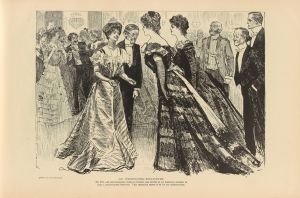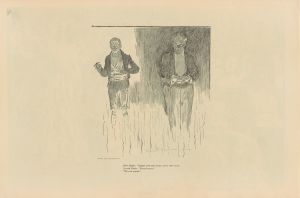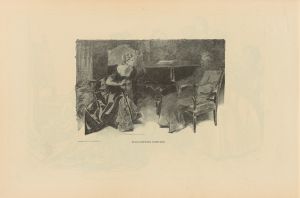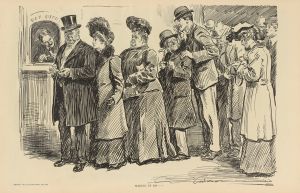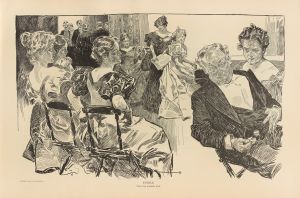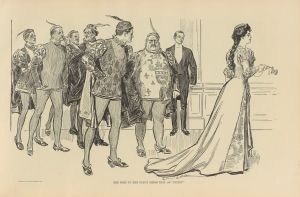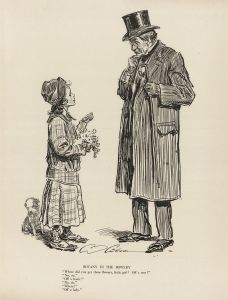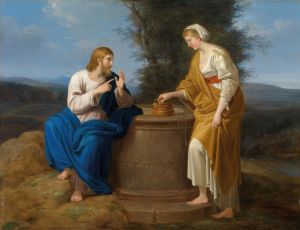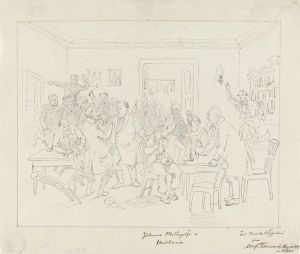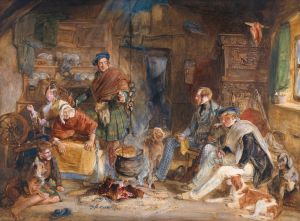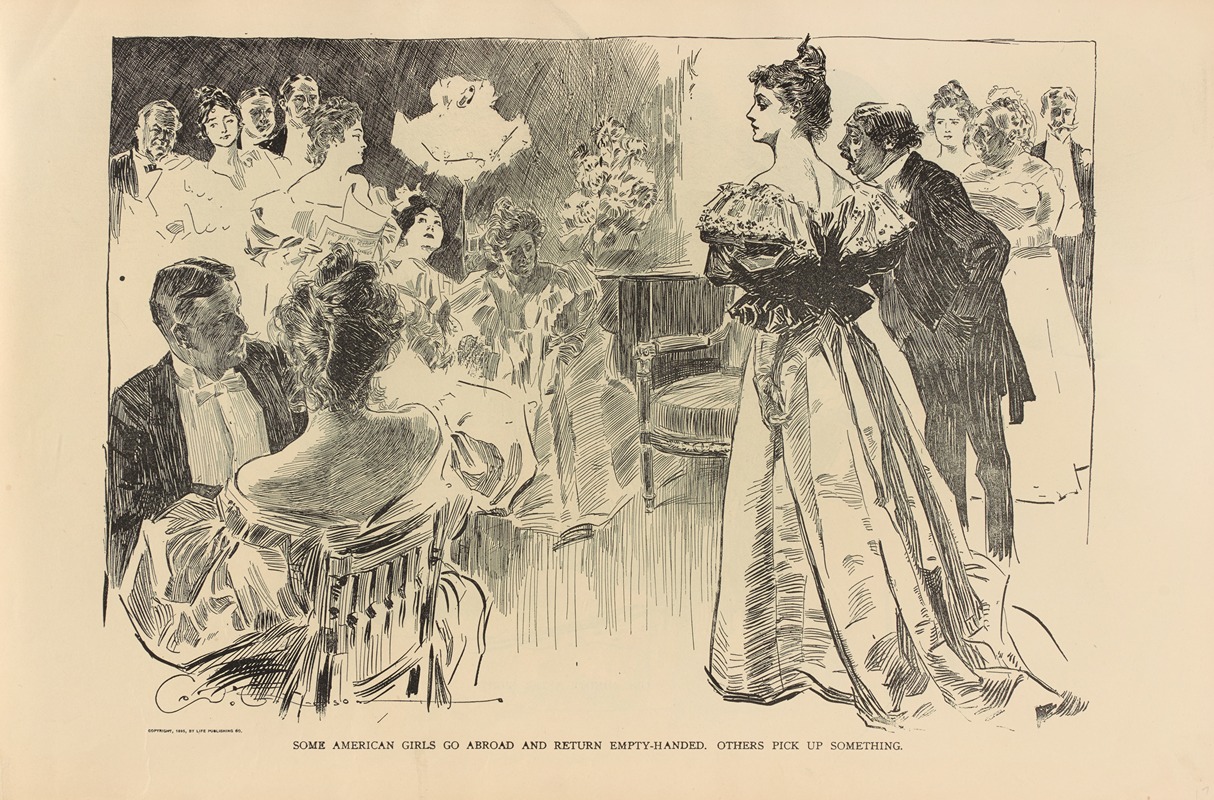
Some American girls go abroad and return empty-handed. Others pick up something
A hand-painted replica of Charles Dana Gibson’s masterpiece Some American girls go abroad and return empty-handed. Others pick up something, meticulously crafted by professional artists to capture the true essence of the original. Each piece is created with museum-quality canvas and rare mineral pigments, carefully painted by experienced artists with delicate brushstrokes and rich, layered colors to perfectly recreate the texture of the original artwork. Unlike machine-printed reproductions, this hand-painted version brings the painting to life, infused with the artist’s emotions and skill in every stroke. Whether for personal collection or home decoration, it instantly elevates the artistic atmosphere of any space.
Charles Dana Gibson was an influential American illustrator, best known for his creation of the "Gibson Girl," a representation of the idealized American woman at the turn of the 20th century. His work captured the spirit and social dynamics of his time, often with a touch of humor and satire. One of his notable illustrations is titled "Some American girls go abroad and return empty-handed. Others pick up something."
This illustration, like many of Gibson's works, was published in a popular magazine, likely in the late 19th or early 20th century. Gibson's illustrations were widely circulated in publications such as Life, Harper's Weekly, and Scribner's, reaching a broad audience and influencing public perceptions of gender and social norms.
The illustration in question depicts two contrasting scenarios of American women traveling abroad. On one side, it shows women who return "empty-handed," suggesting that their travels did not result in any significant personal or material gain. On the other side, it portrays women who "pick up something," implying that they have acquired something of value during their travels, which could be interpreted as material goods, cultural experiences, or even relationships.
Gibson's work often reflected the societal expectations and aspirations of women during this era. The "Gibson Girl" became an iconic symbol of femininity, beauty, and independence, representing a new type of American woman who was more self-assured and socially active than her predecessors. This illustration, like many others, uses humor and irony to comment on the experiences and choices of women in society.
The context of this illustration is important to understand its significance. During the late 19th and early 20th centuries, international travel was becoming more accessible to affluent Americans, and Europe was a popular destination. The illustration captures the notion of American women seeking cultural enrichment and personal growth through travel, a theme that resonated with the aspirations of the middle and upper classes.
Gibson's work is characterized by its detailed pen-and-ink style, capturing the elegance and poise of his subjects. His illustrations often included subtle social commentary, reflecting the changing roles of women and the complexities of modern life. "Some American girls go abroad and return empty-handed. Others pick up something" is a prime example of how Gibson used his art to engage with contemporary issues and entertain his audience.
Overall, Charles Dana Gibson's illustrations, including this one, offer valuable insights into the cultural and social dynamics of his time. His work remains an important part of American art history, providing a window into the ideals and challenges of the early 20th century.







